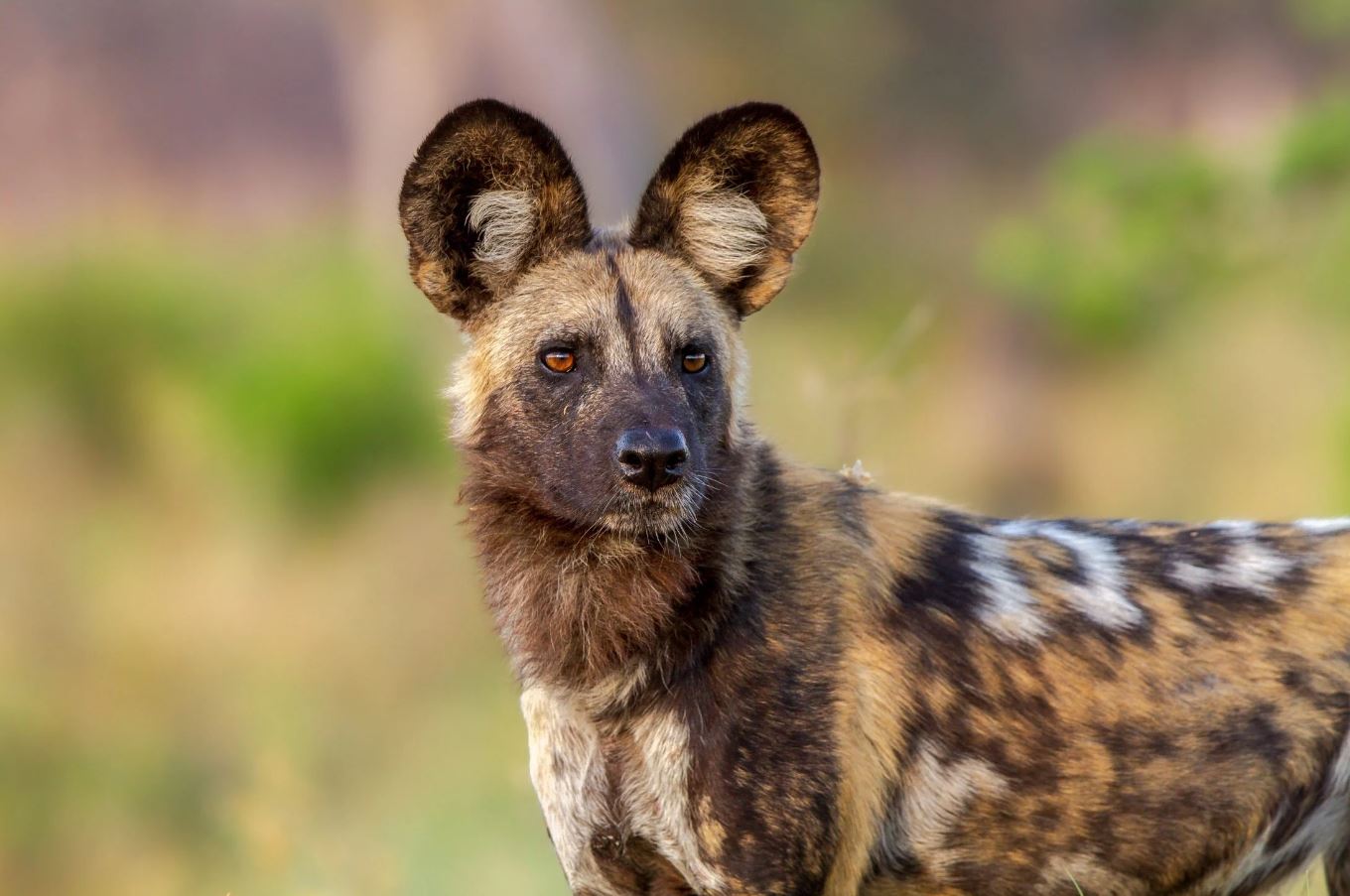Apex predators are fierce hunters who reign at the top of the natural order without any predators of their own. These dominant creatures, also referred to as top predators, occupy the highest position in the food chain.
Among the examples of apex predators are mighty mammals like lions, tigers, wolves, polar bears, orcas, and sperm whales. Reptilian apex predators include saltwater crocodiles, American alligators, king cobras, and green anacondas. Impressive birds such as bald eagles and wedge-tailed eagles, as well as formidable fish like the great white shark and great hammerhead shark, are also considered apex predators.
Enclosed below is a comprehensive list featuring these remarkable creatures and many others, accompanied by captivating images and intriguing facts about each species. You can click on the names to access specific information about individual species or simply scroll down to explore captivating pictures and fascinating facts about all these remarkable animals.
List of Apex Predators:
- African Wild Dog
- American Alligator
- Bald Eagle
- Coconut Crab
- Cougar
- Dingo
- Fossa
- Galápagos Hawk
- Giant Moray
- Giant Otter
- Great Hammerhead
- Great Skua
- Great White Shark
- Green Anaconda
- Grizzly Bear
- Jaguar
- King Cobra
- Komodo Dragon
- Lion
- Martial Eagle
- Nile Crocodile
- Orca / Killer Whale
- Polar Bear
- Saltwater Crocodile
- Snow Leopard
- Sperm Whale
- Spotted Hyena
- Tiger
- Wedge-Tailed Eagle
- Wolf
Apex Predator Ecology
Apex predators reign supreme in the hierarchy of the natural world, occupying the highest position in the food chain without any predators of their own. In the realm of ecology, these apex predators are referred to as tertiary consumers. Positioned below them in the food chain are the secondary consumers, which both hunt and become prey to other animals. Further down are the primary consumers – herbivorous creatures that exclusively feed on plant material.
All animals, including herbivores, are consumers by nature. As heterotrophs, they lack the ability to generate their own sustenance and therefore must consume other organisms to sustain themselves.
Organisms capable of producing their own food are known as autotrophs. Among them, plants play a vital role as primary producers in the food chain. All other forms of life ultimately depend on autotrophs for survival.
Even the majestic tiger, an apex predator confidently roaming the Asian jungles, is reliant on the energy provided by plants!
Threats to Apex Predators
Although apex predators have no natural predators, they frequently face various threats. Due to their complete reliance on healthy ecosystems, they often become the first casualties when an ecosystem undergoes change.
Several animals classified as apex predators are currently endangered. One of the primary causes is habitat loss. When an ecosystem can no longer sustain the necessary number of prey animals, its apex predators are unable to survive. This detrimentally affects the overall well-being of the ecosystem.
List of Apex Predators
African Wild Dog
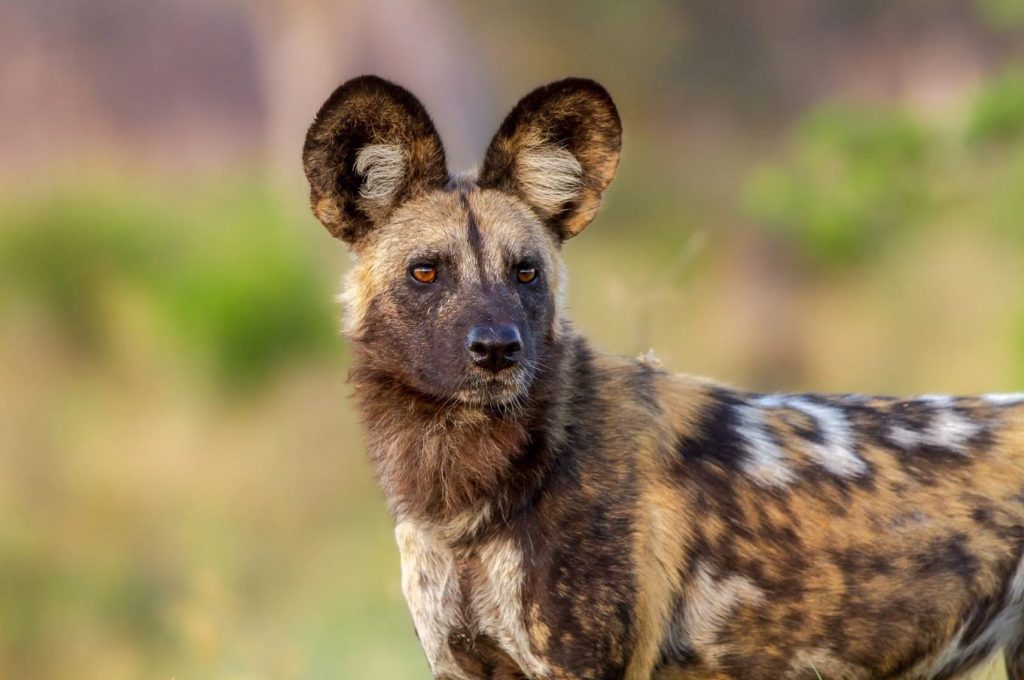
Scientifically known as Lycaon pictus, the African wild dog belongs to the mammalian family Canidae and is primarily found in Africa, specifically in the region south of the Sahara Desert. This remarkable creature, an endangered species, possesses a distinct appearance with its patchy coat displaying shades of orange, black, and white. Notably, it stands out due to its long legs and large ears.
Although the African wild dog’s habitat spans a significant portion of sub-Saharan Africa, it has an exceptionally low population density and is seldom encountered. Displaying highly social behavior, this species lives and hunts in packs comprising a variable number of individuals ranging from a few to more than twenty. Its primary prey consists of antelopes, relying on its exceptional endurance to chase them over vast distances until the exhausted victim succumbs.
Due to its lifestyle, the African wild dog necessitates a substantial territory for survival and hunting. However, human encroachment into its natural habitat has resulted in the fragmentation of its range. These fragmented areas are incapable of supporting large populations of the species, leading to a decline in its numbers. Consequently, the African wild dog faces the critical threat of endangerment.
American Alligator
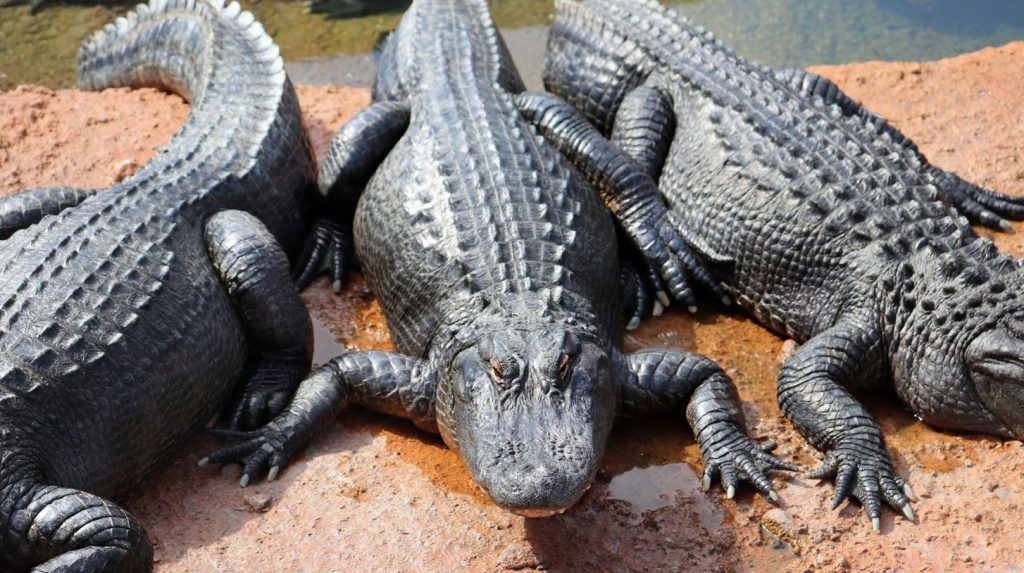
Scientifically known as Alligator mississippiensis, the American alligator is a reptile belonging to the Alligatoridae family. It is primarily found in North America, specifically in the southeastern region of the United States.
Among the two existing species of alligators, the American alligator is the larger one, with the Chinese alligator being the other. It ranks among the largest crocodilians worldwide, surpassed only by the saltwater and Nile crocodiles in size.
With a maximum weight of approximately 1,000 kg (2,200 lb) and a length of 4.7 m (15.6 ft), the American alligator shares a similar size range with other notable large crocodilians like the Orinoco crocodile, black caiman, and American crocodile.
As an apex predator, the American alligator employs an ambush tactic when hunting, often lurking submerged in water and swiftly striking its prey when it comes within range. It is also capable of hunting and capturing prey on land. The alligator’s immensely powerful jaws, among the strongest in the animal kingdom, and its sharp teeth make escape highly improbable for unfortunate victims.
Interestingly, the American alligator has exhibited a rare behavior of balancing sticks on its head to attract and capture birds gathering nesting materials. This unique hunting strategy represents one of the few known instances of tool use by reptiles.
Bald Eagle

Scientifically known as Haliaeetus leucocephalus, the bald eagle is a bird belonging to the Accipitridae family. It can be found in North America and is recognized as the national bird of the United States. This majestic creature holds a prominent position among the country’s apex predators and is renowned for its distinctive features.
With its white head and tail, black body and wings, and yellow bill and legs, the bald eagle is easily identifiable. It is commonly sighted in wetland habitats, both along the coast and further inland.
Belonging to the genus Haliaeetus, which is often referred to as “sea eagles” or “fish eagles,” the bald eagle primarily feeds on fish. However, it also hunts waterbirds and mammals as part of its regular diet. Additionally, carrion plays a significant role in its feeding habits.
The bald eagle population faced a severe decline due to the use of the pesticide DDT, which resulted in thinning of their eggshells, as well as human persecution. In the mid-20th century, there were only 412 nesting pairs recorded in the contiguous states.
Fortunately, the banning of DDT in the United States in 1972 and the implementation of various conservation measures have led to a remarkable recovery of the bald eagle population. Consequently, the species is no longer considered threatened, and its conservation status is classified as “Least Concern.”
Coconut Crab

Scientifically known as Birgus latro, the coconut crab is a type of crustacean belonging to the Coenobitidae family. It can be found in the Indian Ocean and the Pacific Ocean. This intriguing creature is considered vulnerable in terms of conservation status.
What sets the coconut crab apart from other crabs is its preference for terrestrial habitats. It is commonly spotted on various islands in the Indian and Pacific Oceans, even venturing several miles away from the coastline.
Remarkably, the coconut crab holds the title for being the largest land-living arthropod worldwide, boasting an impressive leg-span that can reach up to 1 meter or 3.28 feet.
During its juvenile stage, the coconut crab behaves like a hermit crab, seeking protection by residing within discarded shells of gastropods. However, as it matures, its own exoskeleton becomes hardened, eliminating the need for external shelter.
As an omnivore, the coconut crab primarily consumes plant material, forming the bulk of its diet. Nevertheless, it also displays a varied palate, including carrion, turtle hatchlings, other crabs, and occasionally small mammals.
When it comes to natural predators, the adult coconut crab has managed to evade them successfully, with humans being the only known threat. As a result, this substantial crustacean assumes the role of an apex predator in its ecosystem.
Cougar
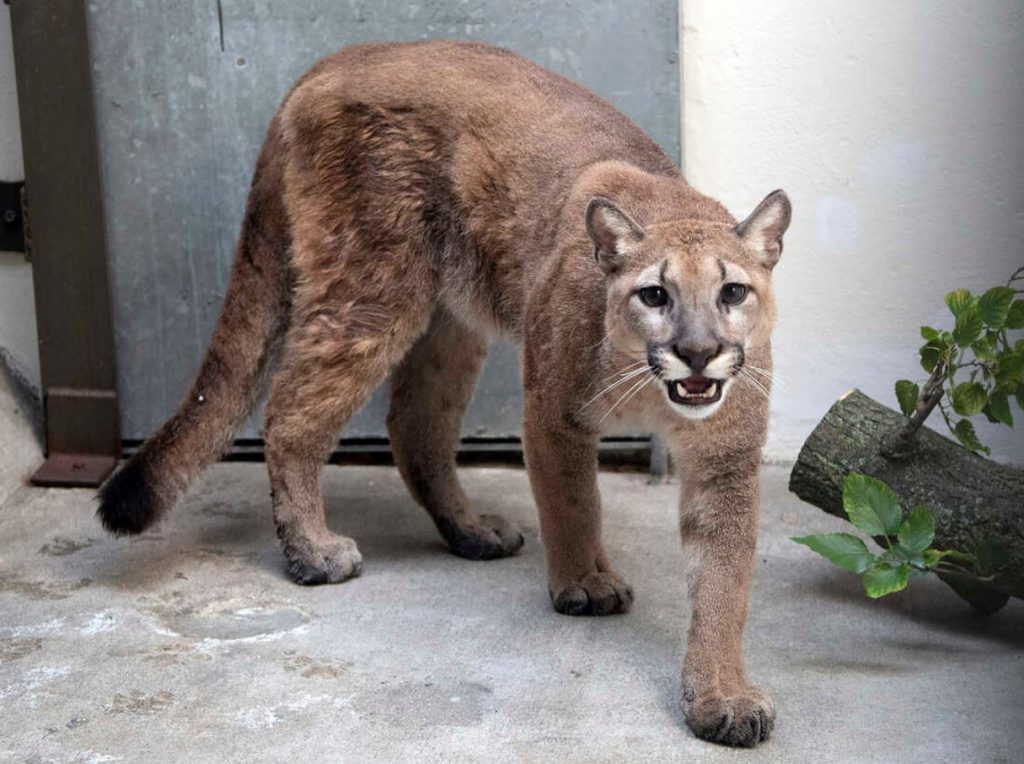
Scientifically known as Puma concolor, the cougar is a mammal belonging to the Felidae family. It can be found in both North and South America and is classified as a species of Least Concern in terms of conservation status.
With a remarkable nose-to-tail length of up to 2.75 meters (9 feet) and weighing as much as 100 kilograms (220 pounds), the cougar is the second-largest feline species in the Americas. Only the jaguar surpasses its size.
Despite its larger average size compared to leopards and snow leopards, the cougar is not considered a “true” big cat. This is due to its exclusion from the Panthera genus. Surprisingly, the cougar is more closely related to domestic cats than to lions, tigers, leopards, and other “big cats.”
The cougar goes by various names such as “puma,” “mountain lion,” and “catamount.” It has an extensive range from Canada to Chile, boasting the largest habitat coverage of any mammal in the Americas. Cougars adapt to diverse environments, ranging from deserts to dense forests.
As an obligate carnivore, the cougar relies solely on meat to obtain the necessary nutrients for survival, much like all feline species. In North America, the primary component of a cougar’s diet consists of deer.
While a determined black bear or a pack of wolves may occasionally displace a cougar from its prey, the cougar lacks true predators and therefore holds the status of an apex predator.
Dingo

Scientifically known as Canis lupus dingo, Canis familiaris, or Canis dingo, the dingo is a mammal belonging to the Canidae family. This medium to large-sized dog is predominantly found across various habitats in Australia, ranging from deserts to tropical forests. Sporting a distinct sandy-golden coat, the dingo’s vocalizations differ from those of domestic dogs, relying more on howls and growls rather than barks.
The dingo’s origins trace back to Southeast Asia, and its classification remains a topic of debate among zoologists. Some consider it a subspecies of wolves, while others classify it as a subspecies of domestic dogs. Some even argue for its recognition as a separate species altogether.
Closely related to the New Zealand singing dog, it is believed that the dingo was brought to Australia by nomadic humans between 4,000 and 9,000 years ago.
Dingoes can either live solitarily or in small family groups consisting of a mated pair and their offspring.
When hunting alone, dingoes typically target smaller prey such as possums, wombats, wallabies, and rabbits. In pack hunting scenarios, they are more inclined to pursue larger prey like large kangaroos. The dingo employs a strategy of wearing down its prey through relentless pursuit before launching a final attack.
Fossa

Scientifically known as Cryptoprocta ferox, the fossa is a mammal belonging to the Eupleridae family. It can be found exclusively in Madagascar and holds the status of being a vulnerable species in terms of conservation.
As an apex predator, the fossa holds the position of the largest mammalian predator on the African island of Madagascar. It possesses unique adaptations such as semi-retractable claws and flexible ankles that enable it to climb down tree trunks head-first. These physical traits make the fossa highly adept at hunting both on land and in trees. While lemurs constitute a significant portion of its diet, the fossa also preys on various small vertebrates.
The fossa exhibits crepuscular activity on occasion, but it predominantly hunts during the night, taking advantage of its thick dark coat that provides excellent camouflage. Typically, the fur of the fossa is dark brown, although some individuals may have a black coat.
Human beings are the sole predators of the fossa, driven by the hunting of the animal for meat and the misguided perception of it being dangerous. In reality, this carnivorous mammal is highly cautious and will actively avoid human encounters whenever possible. Incidents of the fossa preying on poultry are relatively rare and primarily arise due to encroachment resulting from human development.
Galápagos Hawk
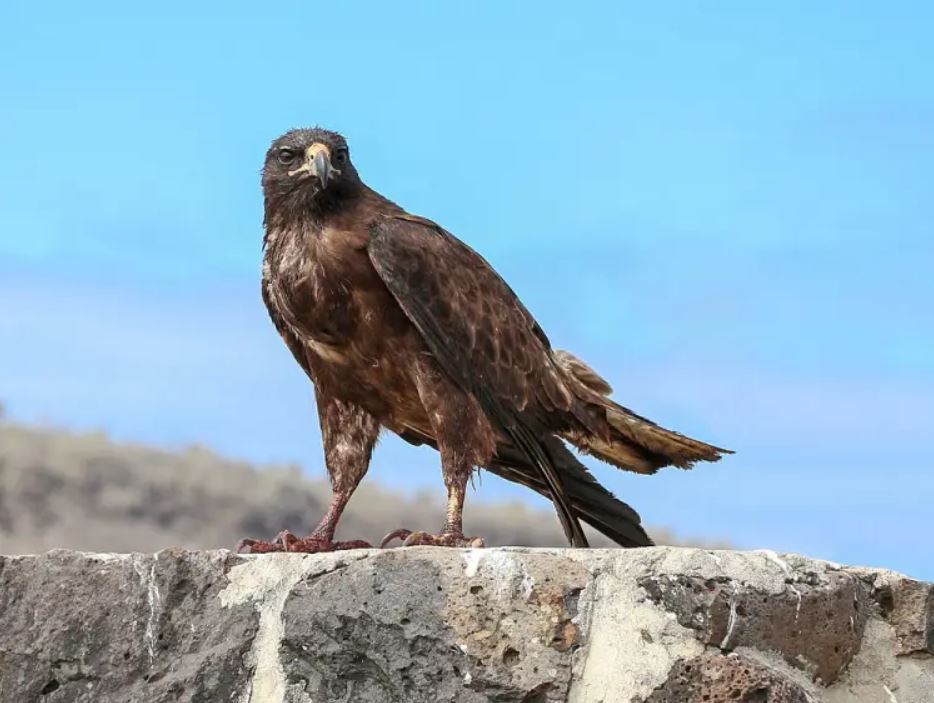
Scientifically known as Buteo galapagoensis, the Galápagos hawk is a bird belonging to the Accipitridae family. It can be found exclusively in the Galápagos Islands. This magnificent creature holds a vulnerable conservation status.
At the pinnacle of the food chain within its island habitat, the Galápagos hawk preys on a variety of small to medium-sized vertebrates and invertebrates. When the opportunity arises, it also scavenges carrion.
Living and hunting in small familial units consisting of 2 to 3 individuals, this bird relies on its exceptional eyesight to locate potential prey from remarkable distances of up to 30.5 meters (100 feet) while gracefully soaring through the skies.
Equipped with robust and sharp talons, the Galápagos hawk adeptly captures and dispatches its prey, while its sturdy, curved beak enables it to tear apart flesh with ease.
In matters of reproduction, the male Galápagos hawk remains monogamous, while the female can engage in mating with up to seven different males during the breeding season. Both the female and the males share the responsibilities of incubating the eggs and caring for the young.
Giant Moray
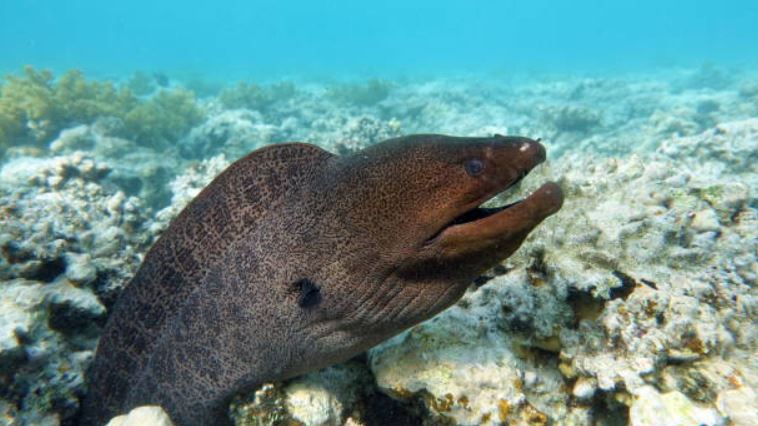
Scientifically known as Gymnothorax javanicus, the giant moray is a fish belonging to the Muraenidae family. It can be found in the Indian Ocean and the Pacific Ocean. Currently, its conservation status is classified as Least Concern.
This impressive creature is a carnivorous eel, boasting an average length of 3 meters (9.8 feet) and weighing around 24 kilograms (53 pounds). The largest recorded giant moray weighed a remarkable 70 kilograms (154 pounds).
While it holds the title for the heaviest moray eel, the slender giant moray, Strophidon sathete, surpasses it in length.
The giant moray possesses two pairs of tubular nostrils, compensating for its poor eyesight with an extraordinary sense of smell. This heightened sense allows it to be an efficient predator during the nighttime.
A fascinating aspect of the giant moray’s life is its symbiotic relationship with shrimp. These shrimp diligently clean the eel’s teeth and rid it of external parasites in exchange for food scraps. Cleaner wrasse fish also engage in this mutually beneficial behavior.
Equipped with sharp and curved teeth, the giant moray is well-suited for immobilizing its prey and tearing flesh. While its diet primarily consists of fish, it also preys on crustaceans.
Giant Otter

Scientifically known as Pteronura brasiliensis, the giant otter is a mammal belonging to the Mustelidae family. It can be found in the South American region. Sadly, this remarkable creature is classified as endangered.
Impressively, the giant otter can grow up to 1.8 meters (6 feet) in length and weigh around 34 kilograms (75 pounds), making it the largest member of its family.
When it comes to hunting, the giant otter utilizes all its senses, but its eyesight plays a vital role. It possesses specialized vision that enables it to see clearly in the murky waters of rivers.
To meet its daily dietary needs of 1.7 to 4.1 kilograms (6 to 9 pounds) of fish, the giant otter employs efficient hunting techniques. It hunts both alone and in coordinated groups, employing strategic approaches.
While fish predominantly constitute the giant otter’s diet, it also consumes crustaceans, reptiles, and other small vertebrates.
Endemic to South America, the giant otter thrives in slow-flowing rivers abundant with vegetation. Its preferred habitat includes the Amazon Rainforest.
Great Hammerhead
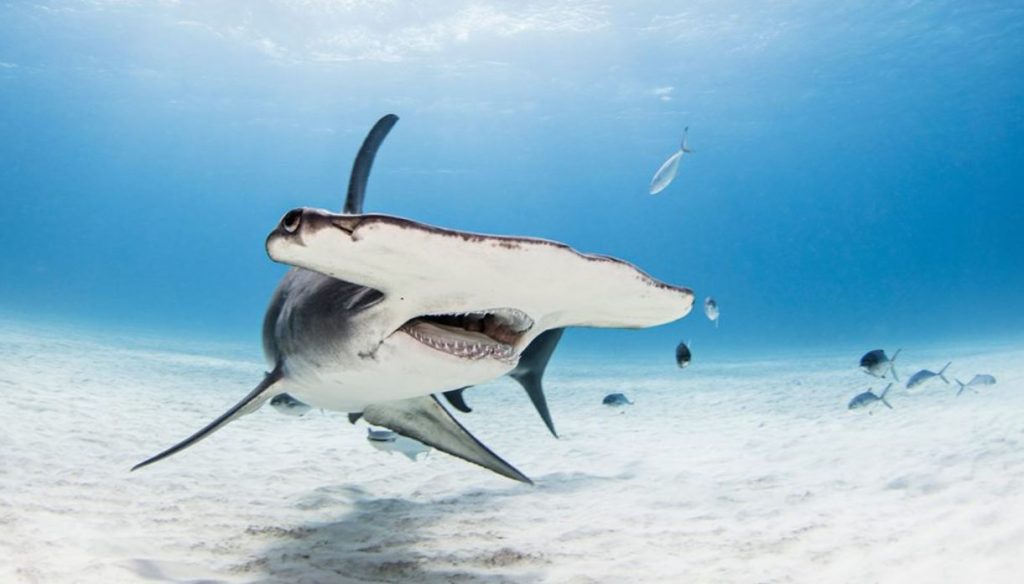
Scientifically known as Sphyrna mokarran, the great hammerhead is a fish belonging to the Sphyrnidae family. It can be found in oceans around the world. Unfortunately, it is currently classified as Critically Endangered.
This magnificent shark holds a notable characteristic in its elongated head, which serves multiple purposes. Its widely-spaced eyes provide excellent binocular vision, while the separated nostrils assist in scent detection and locating the source.
Moreover, the elongated head houses an increased number of electroreceptive organs, enabling the great hammerhead to detect electrical fields generated by other marine creatures.
Interestingly, this shark possesses immunity to the venom of stingrays, which are a regular part of its diet. It also preys on squid and smaller shark species. Despite sometimes gathering in large groups, the great hammerhead is primarily a solitary nocturnal hunter.
The greatest threat faced by this critically endangered shark is overhunting by humans. The fish is targeted for its teeth, fins, and skin, leading to a severe decline in its population.
Great Skua
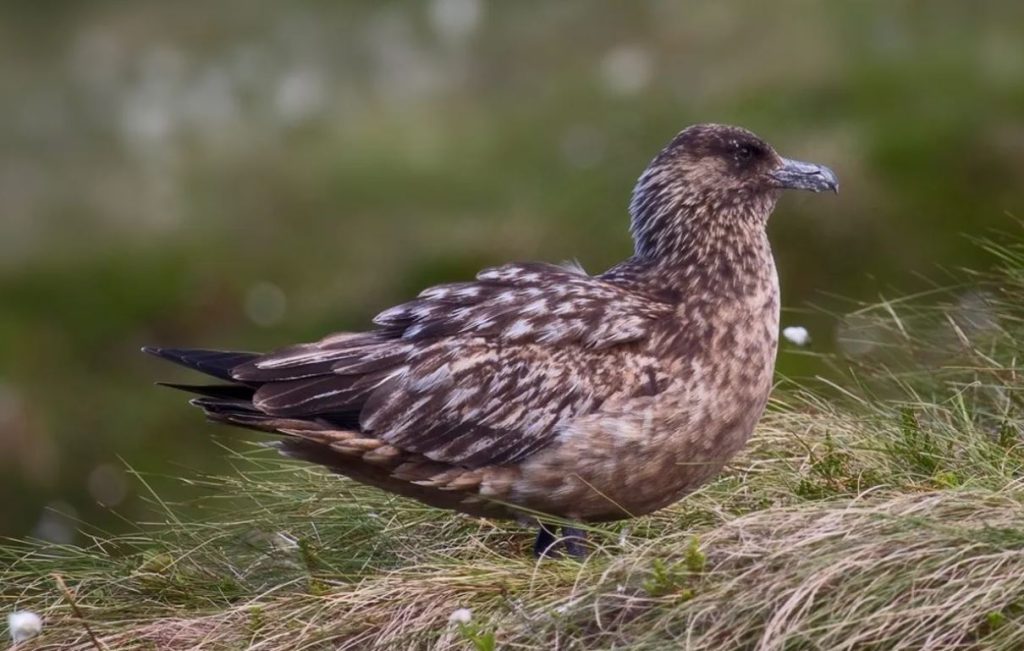
Scientifically known as Stercorarius skua, the great skua is a formidable avian creature belonging to the Stercorariidae family. Its habitat spans across all continents, making it a widely distributed species. Remarkably, this bird has been classified as being of least concern in terms of conservation status.
The great skua is a sizable bird that thrives primarily in the marine environment, venturing onto land solely for breeding purposes. It exhibits a notable lack of fear towards humans and fiercely safeguards its nest against any trespassers.
Distinguished by its dark brown feathers adorned with lighter stripes, this bird possesses a dark gray beak and feet. Due to its webbed feet, the great skua relies predominantly on its robust, curved beak for hunting activities.
As a carnivorous predator, this bird primarily sustains itself on a diet of fish, yet it opportunistically preys on a diverse range of animals. It is known to pursue and pilfer the catch of other seabirds, even those larger in size. Smaller marine birds constitute a regular part of the great skua’s meals, alongside scavenging carrion.
Notably, the great skua showcases a unique hunting behavior by engaging in nocturnal expeditions to target petrels, setting it apart from its counterparts.
Great White Shark
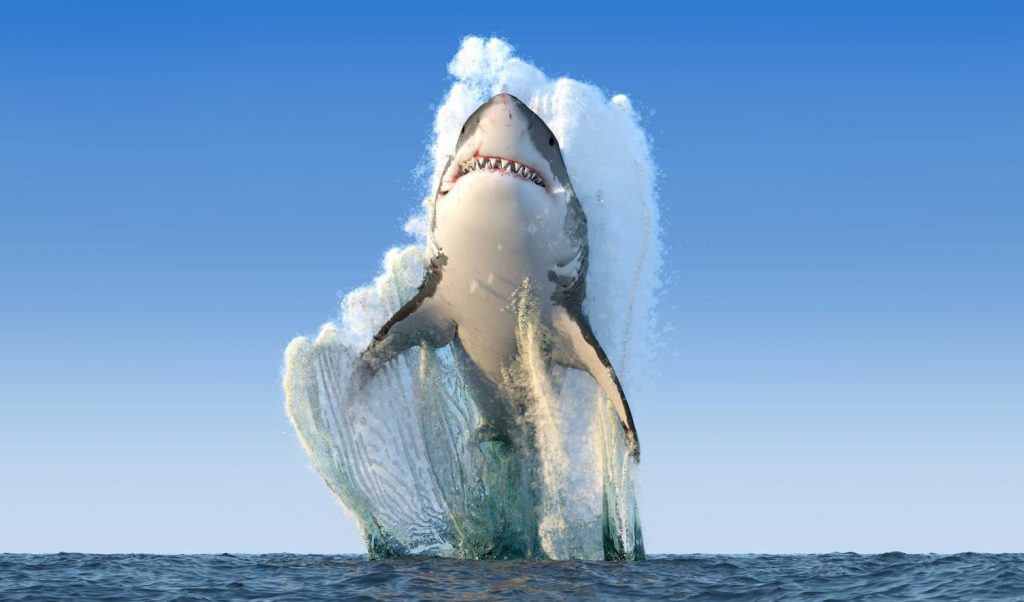
Scientifically known as Carcharodon carcharias, the great white shark is a remarkable fish belonging to the Lamnidae family. It can be found in oceans all around the world. With its impressive size, reaching up to 8 meters (26.2 feet) in length and weighing over 2 tons (4409.3 lbs), this species holds a significant presence in the marine realm.
Despite being an apex predator, the great white shark faces a vulnerable conservation status due to its slow reproductive rate. Males take approximately 26 years to reach sexual maturity, while females require around 33 years. Female great white sharks give birth to a litter of 2 to 10 pups every two years.
When it comes to feeding habits, adult great white sharks display opportunistic behavior. Their diet includes sea lions, dolphins, various seal species, sea birds, and even turtles and deceased whales. With approximately 300 teeth, each measuring around 6 cm (2.4 in) in length, this shark possesses an impressive dental arrangement. The teeth are organized in multiple rows, with replacements always prepared to take the place of any broken front teeth. Equipped with serrated edges, these teeth allow the great white shark to deliver powerful and cutting bites.
Green Anaconda
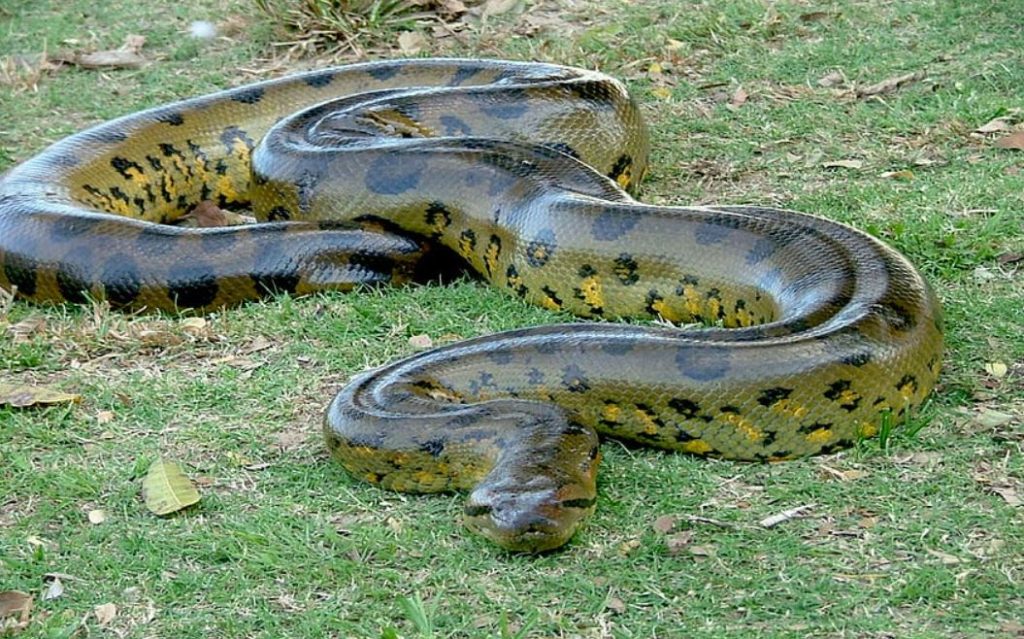
Scientifically known as Eunectes murinus, the green anaconda is a reptile belonging to the Boidae family. It can be found in the South American region. This magnificent creature holds the title of being the largest snake species in terms of weight, although it falls short in length compared to the reticulated python. Green anacondas can grow to be 10 to 12 meters long (32.8 to 39.4 feet) and weigh up to 250 kilograms (551 pounds), with females being larger than males.
Being a semiaquatic predator, the green anaconda employs an ambush strategy. It patiently waits, partially submerged, for potential prey to approach the water’s edge. When the right moment arises, the snake strikes, capturing its victim with its jaws and then coils its body around the unfortunate prey.
The diet of a green anaconda is quite diverse, as it will consume almost anything it manages to catch. This includes deer, jaguars, large rodents, fish, turtles, birds, and even caimans.
Thanks to its slow metabolism, the green anaconda can endure several months without food after consuming a substantial meal.
Typically solitary in nature, the green anaconda tends to socialize only during the breeding season.
If you want to explore further and learn more about various fascinating animals, you can delve into the world of wildlife with Active Wild.
Grizzly Bear
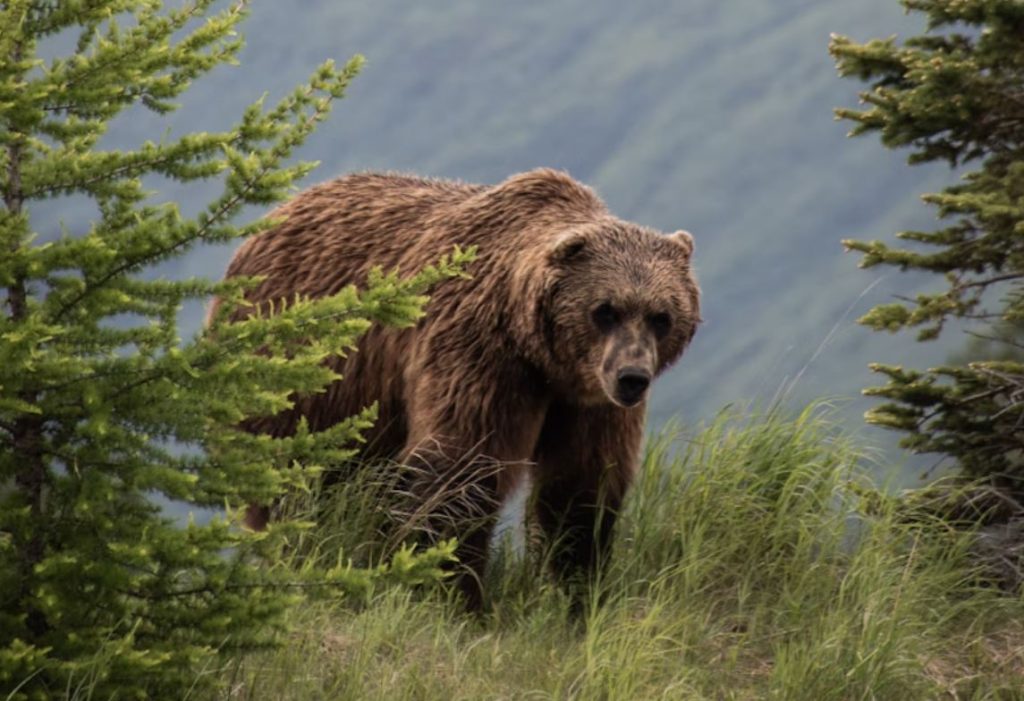
Scientifically known as Ursus arctos horribilis, the grizzly bear belongs to the mammal family Ursidae and is primarily found in North America. In terms of conservation status, the brown bear, to which the grizzly bear belongs, is classified as Least Concern.
The grizzly bear is a remarkable subspecies of the brown bear, inhabiting various regions across the western United States and Canada. Males of this species can grow to impressive heights of up to 3 meters (9.8 feet) and weigh over 300 kilograms (661 pounds). Females are comparatively smaller, with an average weight of 160 kilograms (353 pounds).
As an omnivorous creature, the grizzly bear has a diverse diet that includes berries, insects, mushrooms, roots, small rodents, and even larger animals like moose and elk.
Despite its massive size, the grizzly bear possesses surprising agility and can achieve speeds of up to 56 kilometers (35 miles) per hour when running. Its large, curved, and powerful claws serve as excellent tools for digging while foraging for food.
One remarkable characteristic of the grizzly bear is its exceptional sense of smell, estimated to be seven times more powerful than that of a bloodhound. This compensates for its relatively poor eyesight.
Jaguar

Scientifically known as Panthera onca, the jaguar is a mammal belonging to the Felidae family. It can be found in both South America and North America. Currently, its conservation status is categorized as Near Threatened.
Among the cat species in the Americas, the jaguar holds the title of being the largest and is the third-largest in the world, following the tiger and lion. Its striking tan/yellow coat is adorned with numerous black rosettes, distinct from the leopard’s rosettes as they possess black centers. This unique coat provides the jaguar with impeccable camouflage while it stealthily hunts its prey.
With an impressive bite force, this apex predator surpasses all other cat species in strength, measuring at 1034 n/cm2 / 1500 psi.
The jaguar is a solitary creature, exhibiting its highest level of activity during the twilight hours of dawn and dusk. It tends to remain near bodies of water and is an exceptional swimmer.
As a true carnivore, the jaguar’s diet primarily consists of medium to large mammals such as capybaras, tapirs, and deer. However, it is opportunistic and will prey on a variety of animals it can capture, including snakes and caimans.
King Cobra
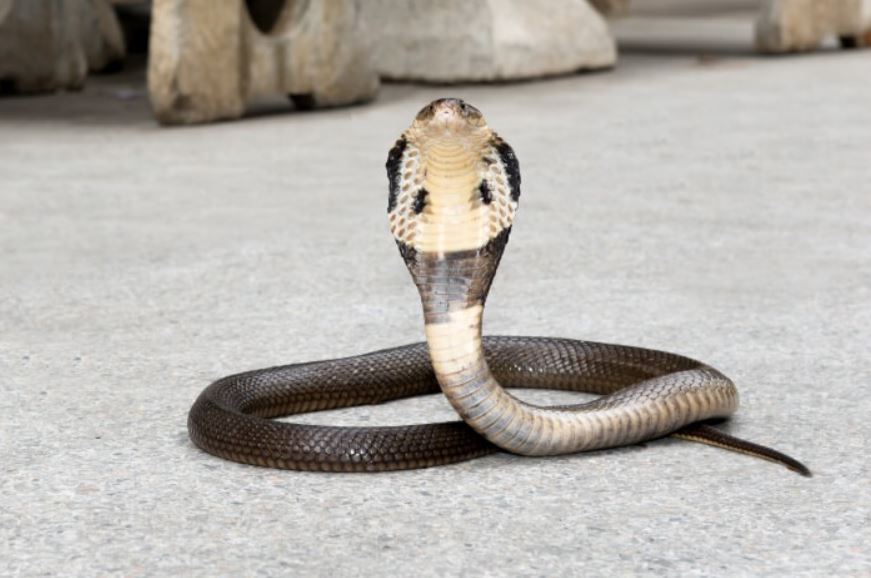
Known scientifically as Ophiophagus hannah, the king cobra is an extraordinary reptile belonging to the Elapidae family. This remarkable creature is primarily found in Asia and holds the conservation status of being vulnerable.
With an average length of 3.7 meters (12 feet) and the potential to reach a maximum length of 5.5 meters (18 feet), the king cobra reigns as the longest venomous snake on Earth. As a top predator in its habitat, it faces little threat except from humans.
This remarkable Asian reptile possesses a discerning palate, primarily feasting on other cold-blooded creatures, with a particular fondness for various snake species.
Setting it apart from other snakes, the king cobra exhibits a unique nesting behavior. It constructs nests to safeguard its eggs, a behavior uncommon in the snake world. The female diligently protects the nest until the eggs hatch, after which the young cobras venture into the world alone.
The venom of the king cobra is exceptionally potent. Just a single bite from this formidable snake can prove fatal to an adult elephant within a matter of hours.
Komodo Dragon
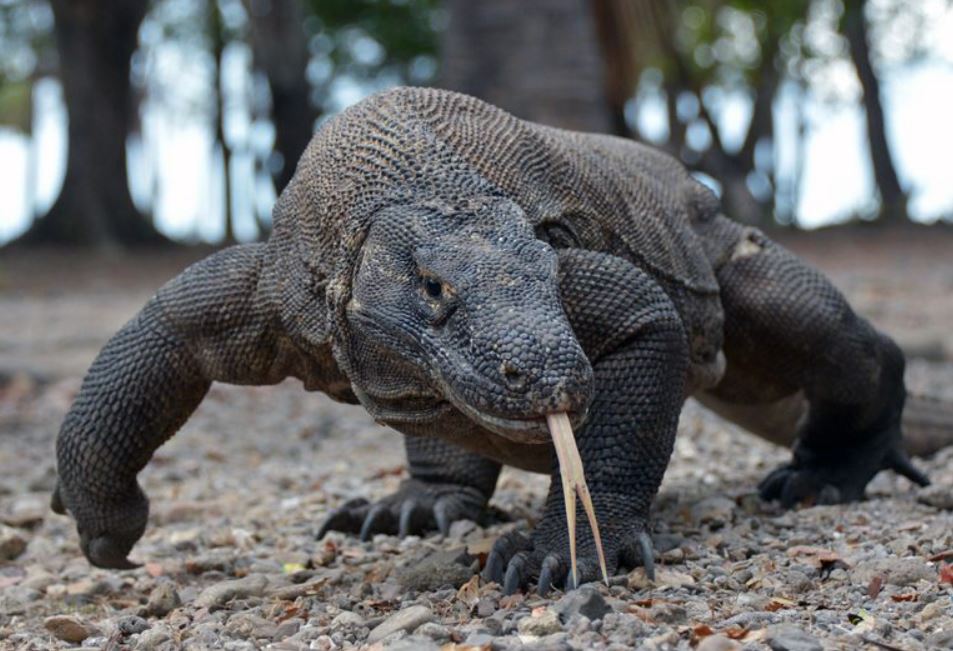
Scientifically known as Varanus komodoensis, the Komodo dragon is a reptile belonging to the Varanidae family. It hails from Asia and is currently categorized as an endangered species. Impressive in size, this mighty lizard can easily grow over 3 meters (9.8 feet) in length and weigh up to 165 kilograms (364 pounds).
Being a carnivore, the Komodo dragon primarily feasts on carrion, but it also possesses the ability to hunt its own prey, even creatures much larger than itself. From birds to formidable beasts like wild pigs and water buffalo, this formidable reptile targets a diverse range of animals.
When on the hunt, the Komodo dragon employs an ambush strategy. It patiently awaits the approach of its target before launching a swift attack. It then pursues the prey until it succumbs to either blood loss caused by the lizard’s venom, which prevents clotting, or infection due to the numerous bacteria present in the dragon’s teeth and saliva.
Equipped with sharp teeth featuring serrated edges, the Komodo dragon efficiently tears off chunks of flesh from its victims. However, it does not chew its food. Instead, it firmly grasps the meat in its mouth and vigorously shakes its head to separate bite-sized portions. It swallows the pieces whole and regurgitates anything indigestible.
Lion
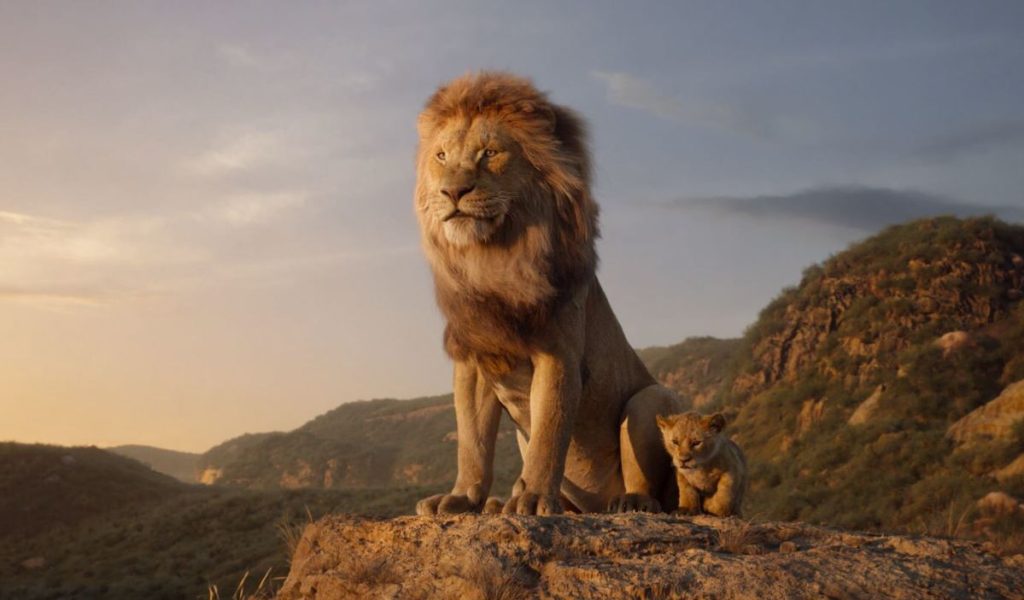
Scientifically known as Panthera leo, the lion is a mammal belonging to the Felidae family. This majestic creature can be found in both Africa and Asia. Currently, it holds a conservation status of being vulnerable, emphasizing the importance of protecting its existence.
The lion, the second largest feline species on the planet (with the tiger claiming the top spot), distinguishes itself by being the only large cat that is not solitary. Instead, it thrives within social groups known as “prides,” where a hierarchical and social order is observed.
Due to the considerable energy expended in hunting and digesting large prey, lions tend to spend a substantial portion of their day sleeping, typically ranging from 20 to 21 hours.
While male lions exhibit the most aggression during feeding, lionesses play a vital role in the hunt. The lion’s preferred prey consists of medium-sized ungulates, but it also scavenges carrion and occasionally pilfers food from hyenas and leopards.
Although the majority of lions reside in Africa, there exists a small population of approximately 650 lions confined to a specific region in India’s Gir Forest. These Asiatic lions are slightly smaller compared to their African counterparts.
Martial Eagle
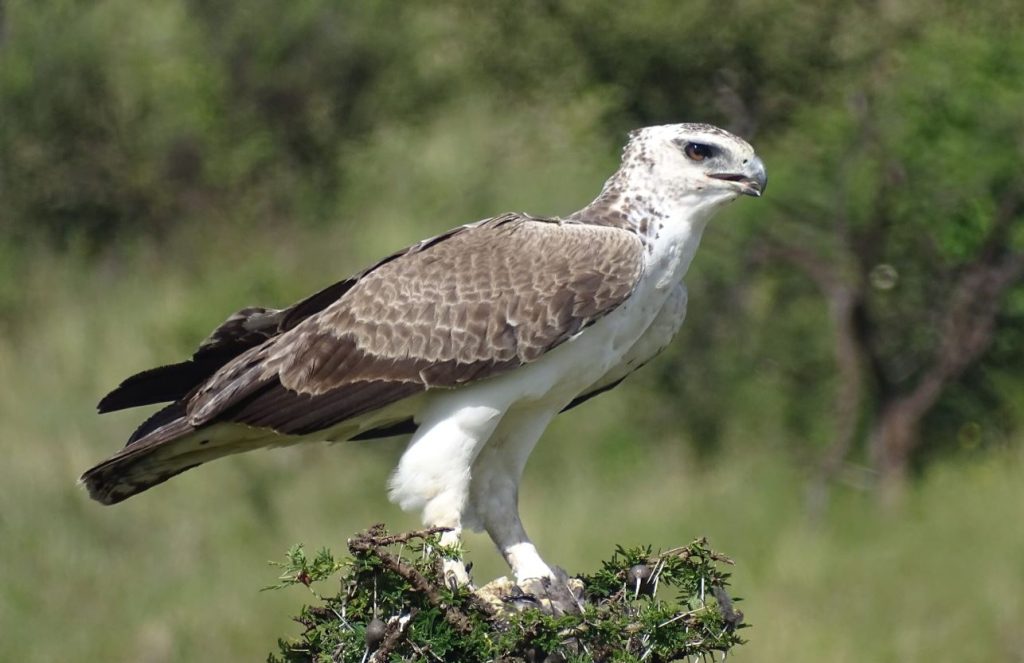
Scientifically known as Polemaetus bellicosus, the martial eagle is a remarkable bird found in Africa. Belonging to the Accipitridae family, it holds the status of being endangered. With its impressive stature of approximately 90 cm (3 feet) in height and weighing up to 6.5 kg (14 lbs), this bird reigns as the largest among African birds of prey. Its predominantly brown plumage is adorned with brown-spotted white underparts.
Possessing a wingspan of 2.6 m (8.5 feet), the martial eagle soars to great heights, rendering itself invisible to the unaided human eye. Its exceptional vision enables it to detect prey from as far as 5 km (3 miles) away.
When hunting, this magnificent eagle dives at high speeds towards its intended target, seizing and dispatching it with its sharp hind claws. Its predatory prowess extends to capturing and consuming creatures much larger than itself, such as monkeys, goats, and small antelopes.
The martial eagle engages in monogamous pairings, demonstrating a strong territorial nature. Bonded pairs establish a home range spanning approximately 130 km2 (50 square miles).
Nile Crocodile

Name in the scientific realm: Crocodylus niloticus Creature classification: Reptile Family: Crocodylidae Native habitat: Africa Conservation status: Least Concern
The Nile crocodile, an African reptile, holds the title of being the largest among African crocodile species and the second largest crocodile globally (only surpassed by the saltwater crocodile). It can stretch up to about 5.5 meters (18 feet) in length and weigh over a ton (2205 pounds)! On average, it weighs around 750 kilograms (1654 pounds).
This apex predator of Africa possesses tremendously forceful jaws capable of delivering a bite with a strength of 3447 newtons per square centimeter (5000 pounds per square inch), approximately five times more powerful than a lion’s bite.
The Nile crocodile is an adept ambusher that typically hunts by patiently lurking underwater near the shore and swiftly lunging to capture unsuspecting prey, such as zebras or antelopes that lower their heads for a drink.
In an intriguing departure from the typical reptilian reproductive strategy, this species exhibits exceptional behavior. Notably, it not only safeguards the nest but also engages in parental care, with the female remaining with the hatchlings for a duration of two months.
Orca / Killer Whale

Scientifically known as Orcinus orca, the orca is a mammal belonging to the Delphinidae family. With its striking black and white patterns, it stands out as the largest member of the dolphin family. Spanning across oceans worldwide, it is a globally distributed cetacean.
As a member of the toothed whale group, which includes all dolphins, the orca possesses teeth for hunting. In contrast, the baleen whales lack teeth and rely on baleen plates to filter small organisms from water.
The orca holds the position of an apex predator, capable of taking down prey much larger than itself, including whales. It employs coordinated strategies involving pods of up to 40 individuals for successful hunts.
While the orca possesses keen eyesight, it primarily relies on echolocation to navigate and locate prey. This highly skilled predator exhibits a remarkable success rate, consuming approximately 136 kg / 300 lbs. of food per day.
Females of this cetacean species can live up to 90 years, while males have a maximum lifespan of 60 years. On average, their lifespan tends to be around 50 years.
Polar Bear
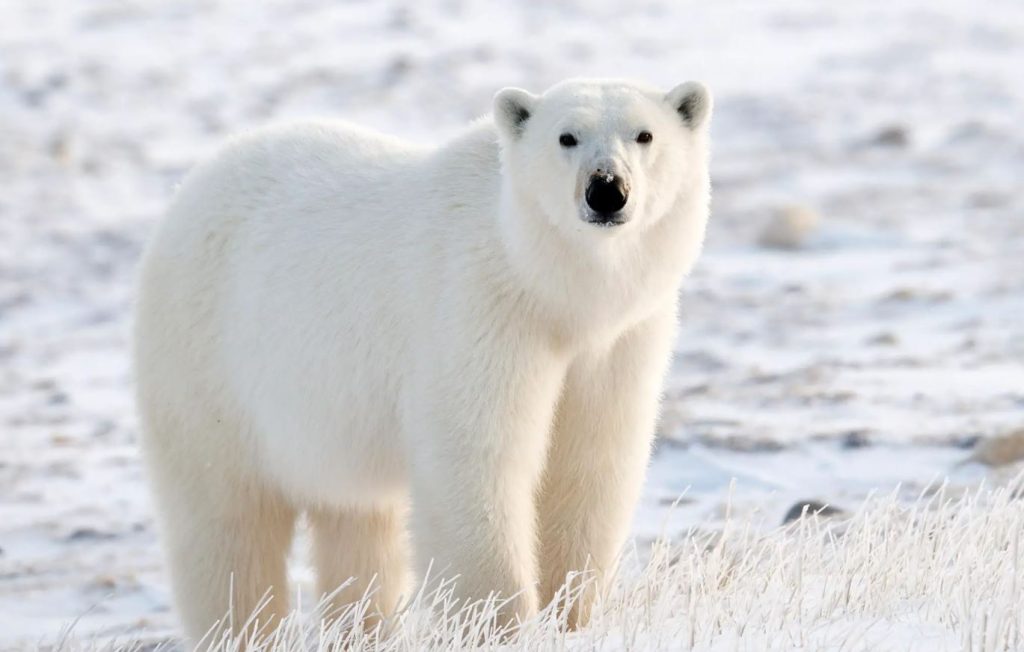
Scientifically known as Ursus maritimus, the polar bear is a remarkable mammal belonging to the Ursidae family. Its habitat spans across North America, Europe, and Asia. Currently, the polar bear holds the conservation status of being vulnerable.
Distinguished by its immense size and snowy white fur, the polar bear possesses a unique characteristic. Surprisingly, its fur is transparent and hollow, causing it to appear white as light passes through the hairs.
This magnificent creature is considered a marine mammal due to its significant time spent in the water. It exhibits exceptional agility when hunting, whether on land or beneath the waves.
Situated at the apex of the Arctic region’s food chain, the polar bear reigns as the dominant predator. Its primary diet consists of seals, whose fatty flesh enables the bear to meet its high caloric needs and maintain an insulating fat layer.
Unbeknownst to itself, the polar bear plays a vital role in the Arctic ecosystem. Through its feeding habits, it unintentionally provides sustenance for weaker or inexperienced bears, as well as other creatures like the Arctic fox. Often, the polar bear consumes only the skin and blubber of its kill, leaving behind unconsumed meat as a source of nourishment for opportunistic scavengers.
Saltwater Crocodile
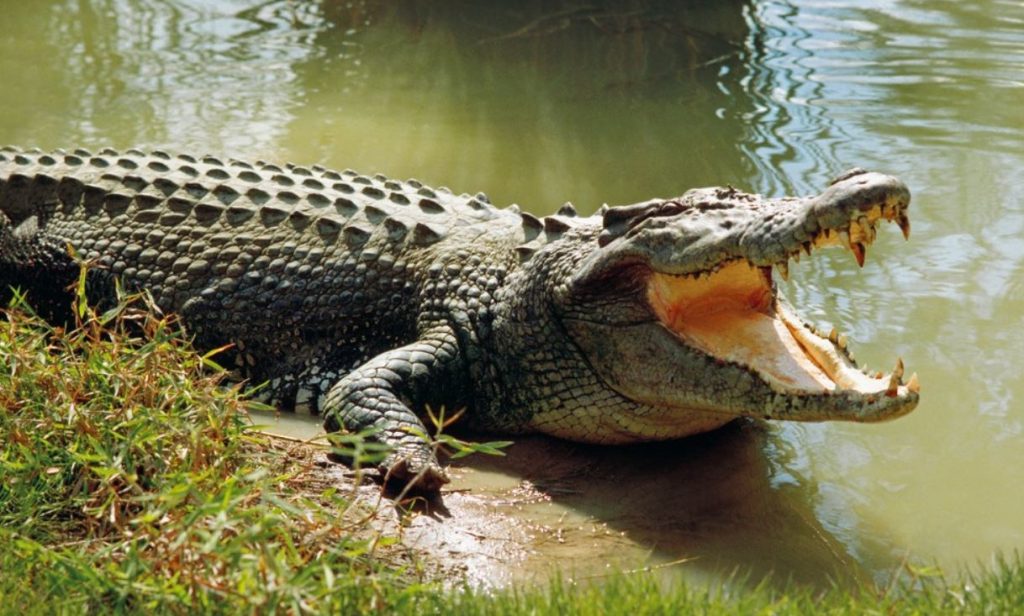
Scientifically known as Crocodylus porosus, the saltwater crocodile is a remarkable reptile belonging to the Crocodylidae family. It can be found inhabiting regions of Australia and Asia. Currently, its conservation status is classified as Least Concern, indicating a relatively stable population.
This extraordinary creature holds the impressive title of being both the largest crocodilian and the largest living reptile on our planet. The males surpass the females in size, often reaching an astounding length of 7 meters or approximately 23 feet. Sporting 64 to 68 teeth, each measuring about 13 centimeters or 5 inches, it possesses the most formidable bite force among all animals.
Dubbed as “salties” in informal terms, saltwater crocodiles display opportunistic feeding behavior, devouring nearly anything within their grasp, including unfortunate human encounters. They exhibit a diverse diet that encompasses water buffalo, gaur, and sambar, which is a large Asian deer.
This species has an exceptional ability to swim over great distances, making its presence known in various Asian countries such as India, Indonesia, Papua New Guinea, Sri Lanka, and the northern regions of Australia.
As an apex predator, the saltwater crocodile faces minimal threats in its natural habitat once it reaches a certain size. Sadly, humans pose the most significant danger as they hunt these crocodiles for their meat, eggs, and valuable skin. To ensure their continued protection, numerous conservation programs have been implemented.
Notably intelligent among reptiles, the saltwater crocodile possesses distinct vocalizations that serve as a means of communication with its fellow conspecifics.
Snow Leopard

Scientifically known as Panthera uncia, the snow leopard is a mammal belonging to the Felidae family. It can be found in the mountainous regions of Asia. Classified as a vulnerable species, this elusive predator is most active during the crepuscular periods of dawn and dusk.
The snow leopard thrives in the challenging terrain of rocky and steep mountains, inhabiting elevations ranging from 1,800 to 5,500 meters (5,905 to 18,044 feet). Spotting one of these magnificent creatures in the wild is an incredibly rare occurrence.
Despite being a solitary and territorial apex predator, the snow leopard tends to avoid aggressive encounters and will often abandon its kill rather than engage in confrontation with another individual.
As an obligate carnivore, the snow leopard relies on consuming meat for its survival, adhering to the dietary habits of all feline species.
With its remarkable agility and strength, the snow leopard is capable of capturing prey that can weigh up to four times its own body weight.
Unfortunately, humans continue to hunt this exceptional wild cat, despite the illegality of such actions. The snow leopard’s fur holds great value in the black market, while its bones are used in traditional Asian medicine.
Sperm Whale
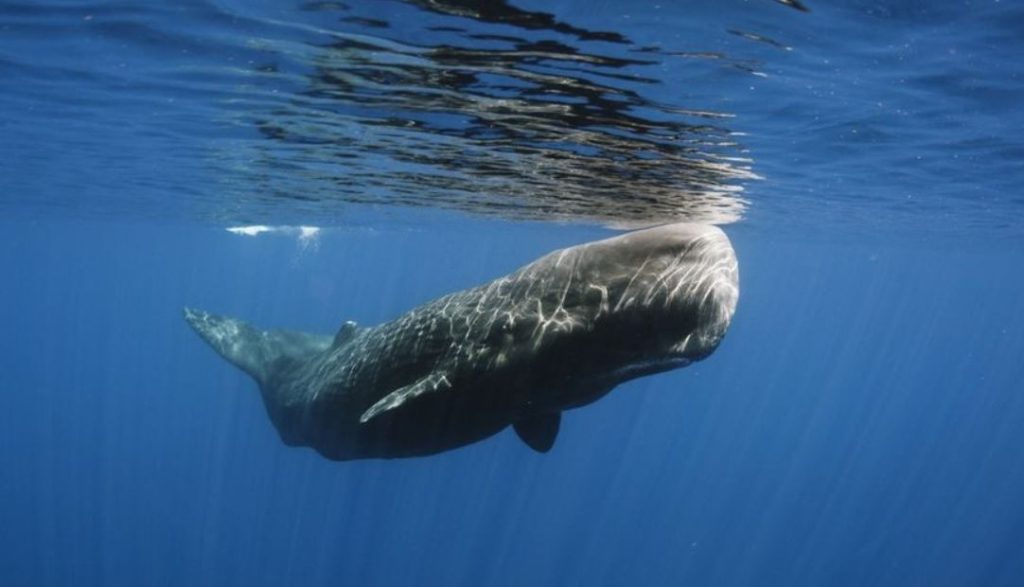
Scientifically known as Physeter macrocephalus, the sperm whale is a magnificent mammal belonging to the Physeteridae family. These incredible creatures can be found in oceans across the globe. However, their conservation status is currently listed as vulnerable.
As the largest toothed whale species, adult male sperm whales can grow to impressive lengths of approximately 16 meters (52.5 feet) and weigh a staggering 45 tons (92,208 lbs). What’s even more astonishing is their enormous appetite, as they consume about 3.5% of their body weight in food every day!
The lower jaw of a sperm whale is adorned with large conical teeth, each weighing around 1 kilogram (2.2 pounds). Moreover, their brain is a true marvel, weighing a remarkable 9 kilograms (19.8 pounds), making it the largest brain among all animal species. These remarkable creatures can live for over 60 years, showcasing their longevity.
When hunting for prey, the sperm whale exhibits remarkable diving abilities, capable of holding its breath for up to an hour and plunging to depths of around 3,000 meters (9,842 feet). Its diet primarily consists of squid, sharks, rays, and various types of fish.
Spotted Hyena
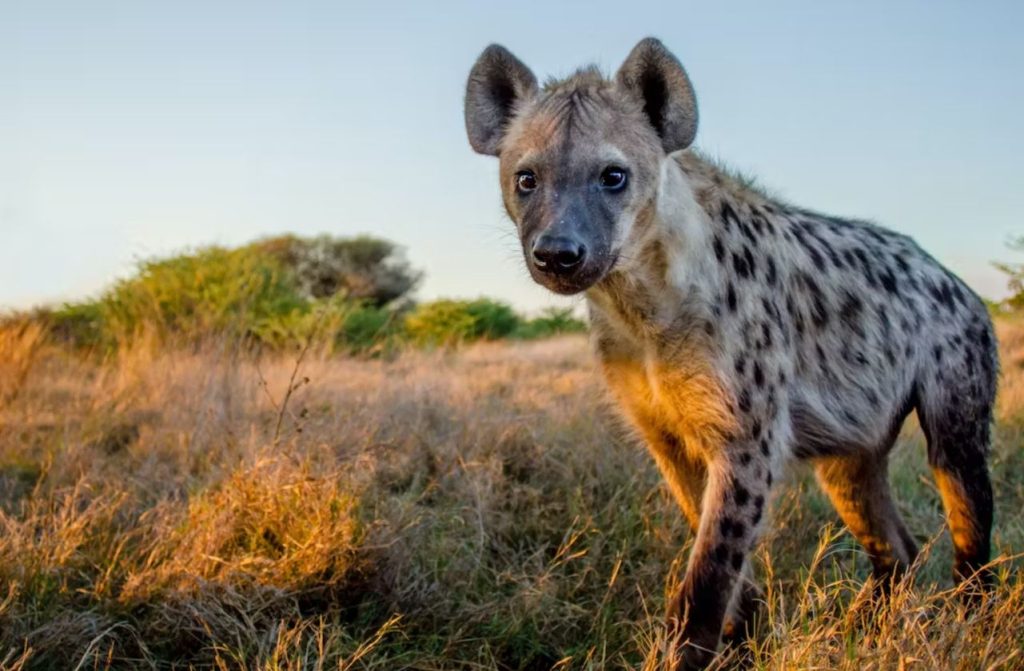
Scientifically known as Crocuta crocuta, the spotted hyena is a mammal found in Africa. Belonging to the Hyaenidae family, this species holds the title of being the largest member and possesses the unique ability to emit a distinctive “laughing” sound.
Unlike its scavenging counterparts, the brown and striped hyenas, the spotted hyena is an active apex predator that primarily relies on hunting rather than scavenging. Recent research indicates that approximately 70% of its diet consists of direct kills.
The spotted hyena is a social creature that forms groups called “clans,” comprising anywhere between 3 and 80 members. These clans exhibit cooperative hunting behaviors, utilizing their collective strength to capture and subdue large prey.
In their pursuit of food, hyena clans may encounter competition from other clans, sometimes even resorting to stealing from lion prides.
Upon reaching sexual maturity, male hyenas depart from the clan, while female hyenas remain with their birth clans for their entire lives.
Tiger
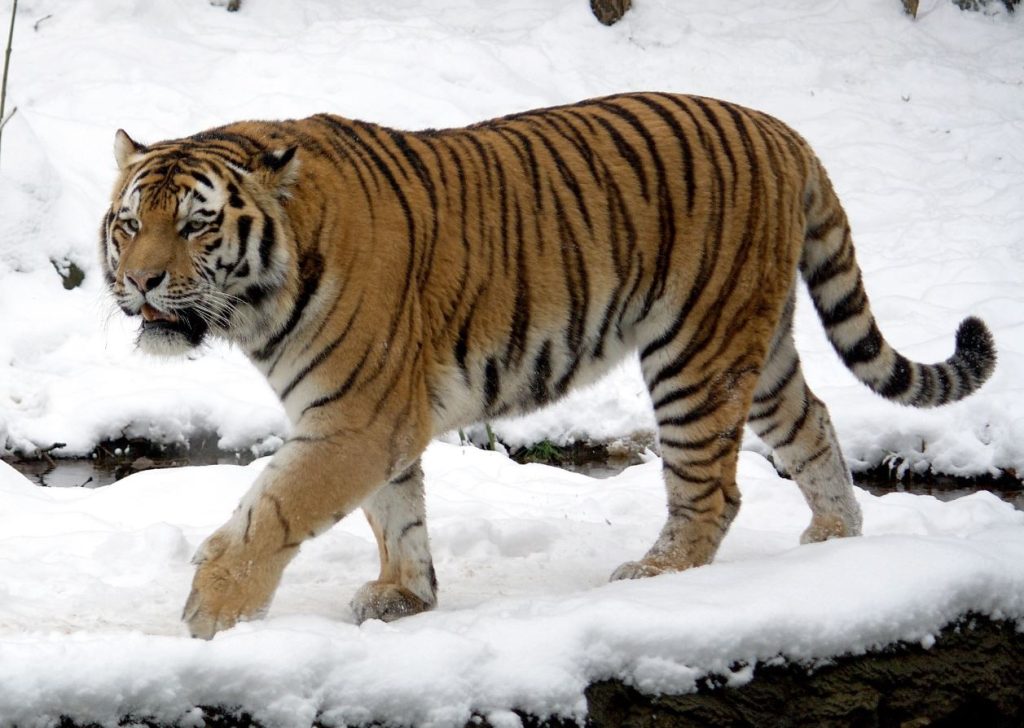
Officially known as Panthera tigris, the tiger is a mammal belonging to the Felidae family. Native to Asia, this magnificent creature holds the title of being the largest member of its feline family and is renowned worldwide for its vibrant orange coat adorned with striking black stripes.
The tiger prefers a solitary lifestyle, only seeking companionship during the mating season. The responsibility of raising the cubs rests solely on the female tiger, who diligently nurtures them from birth until they reach approximately three years of age. During this critical period, the mother must hone her hunting skills to an exceptional level, as she needs to increase her kill rate by around 50% in order to provide sustenance for both herself and her offspring.
Impressively, tigers are adept swimmers and can effortlessly navigate across rivers spanning several kilometers or miles while on the hunt for prey.
Despite being an apex predator, the tiger faces a grave threat to its existence. The species is currently classified as endangered, primarily due to rampant poaching for its valuable fur and other body parts, driven by the illegal wildlife trade.
Wedge-Tailed Eagle
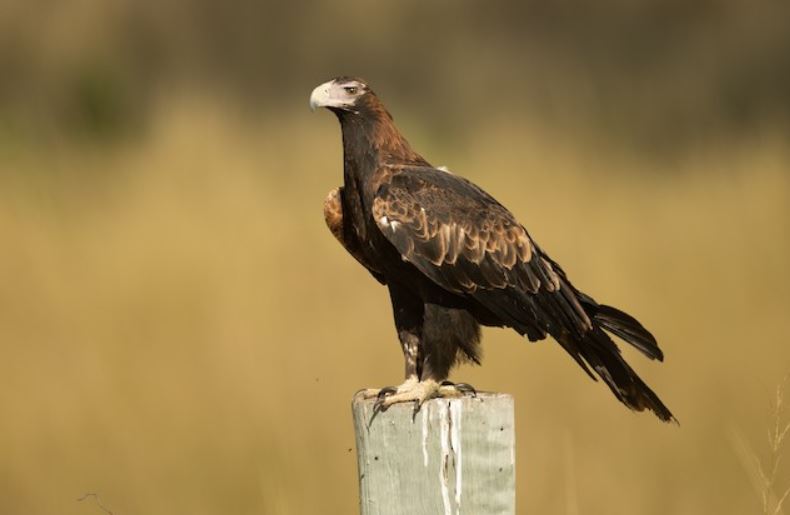
Scientifically known as Aquila audax, the wedge-tailed eagle is a bird belonging to the Accipitridae family. This magnificent creature, native to Australia, holds the title of being the largest bird of prey in the country, boasting an impressive weight of 5.3 kg / 11.7 lbs.
Like many raptors, the female wedge-tailed eagle surpasses the male in size. Both genders don a coat of dark brown feathers, showcasing their majestic appearance.
Thriving across various habitats in Australia, including Tasmania, and even extending to southern New Guinea, these eagles adapt to a diverse range of environments, from semi-deserts to lush rainforests.
As mature adults, the wedge-tailed eagle faces no natural predators. However, their eggs and hatchlings fall prey to several animals, with monitor lizards being particularly notorious in this regard.
These eagles exhibit monogamous behavior, forming a strong bond as a pair and solely interacting with their own offspring, excluding other members of their species.
Operating during the daylight hours, this carnivorous bird plays a vital role in maintaining the ecological balance of its habitat. Its diet encompasses various prey, including the European rabbit, an invasive species in Australia, which constitutes a significant part of its nourishment.
Wolf

Scientifically known as Canis lupus, the wolf is an impressive mammal and a notable creature in various folklore worldwide. It belongs to the Canidae family and is widely distributed across North America, Europe, and Asia. With a conservation status of Least Concern, the wolf holds a significant place among apex predators.
As the largest member of the Canidae family (excluding certain breeds of domestic dogs), the male wolf weighs approximately 80 kg (176.4 lbs), while the female reaches around 55 kg (121.3 lbs).
This carnivorous animal exhibits both solitary and pack hunting behavior. It can sprint at speeds of up to 61.2 km/h (38 miles per hour) in short bursts when pursuing prey. The wolf is known for its opportunistic nature and will scavenge carrion when available.
Living in social structures called “packs,” the wolf is a highly sociable creature. Packs usually consist of a nuclear family, and all members work together to protect and care for the pups.
The wolf possesses a keen sense of smell, which it uses to locate prey. Its diet primarily consists of large hoofed animals, known as ungulates.
